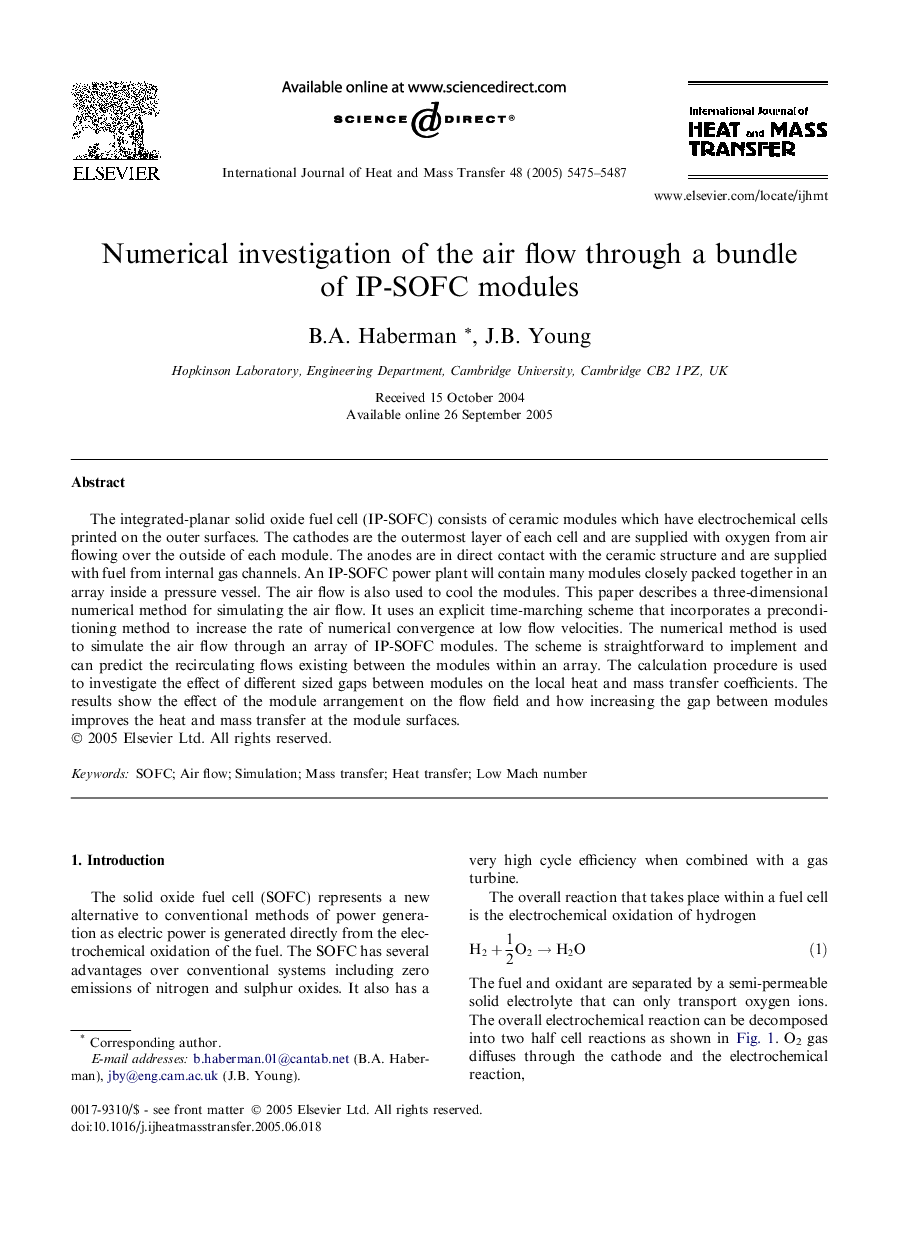| Article ID | Journal | Published Year | Pages | File Type |
|---|---|---|---|---|
| 662603 | International Journal of Heat and Mass Transfer | 2005 | 13 Pages |
The integrated-planar solid oxide fuel cell (IP-SOFC) consists of ceramic modules which have electrochemical cells printed on the outer surfaces. The cathodes are the outermost layer of each cell and are supplied with oxygen from air flowing over the outside of each module. The anodes are in direct contact with the ceramic structure and are supplied with fuel from internal gas channels. An IP-SOFC power plant will contain many modules closely packed together in an array inside a pressure vessel. The air flow is also used to cool the modules. This paper describes a three-dimensional numerical method for simulating the air flow. It uses an explicit time-marching scheme that incorporates a preconditioning method to increase the rate of numerical convergence at low flow velocities. The numerical method is used to simulate the air flow through an array of IP-SOFC modules. The scheme is straightforward to implement and can predict the recirculating flows existing between the modules within an array. The calculation procedure is used to investigate the effect of different sized gaps between modules on the local heat and mass transfer coefficients. The results show the effect of the module arrangement on the flow field and how increasing the gap between modules improves the heat and mass transfer at the module surfaces.
